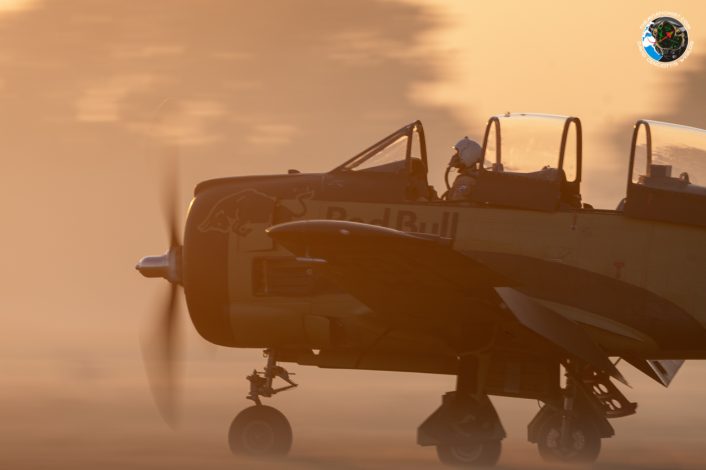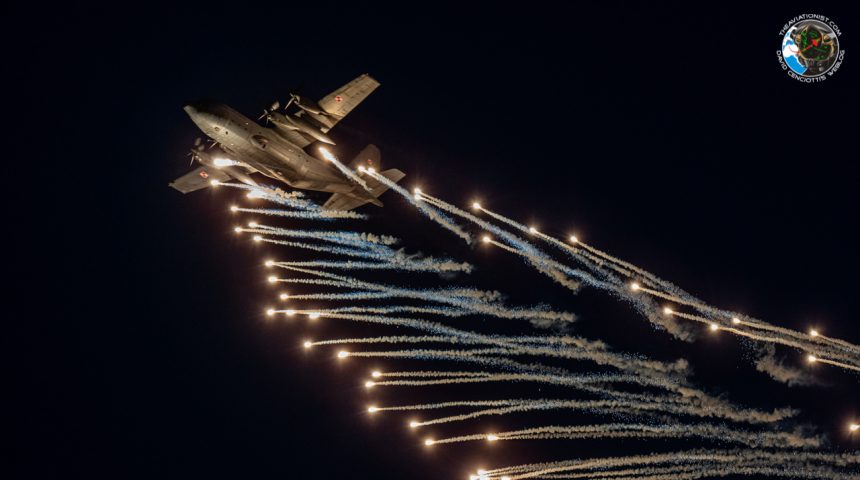Leszno Airshow: A Hidden, yet Growing Gem of the European Airshows Calendar.
Between Jun. 17 and Jun. 19, 2021, we have taken part in the Leszno Antidotum Airshow, organized at the Leszno Airfield in the Strzyżewice district of the Leszno city, Poland. The air show in Leszno has a long-standing tradition: it has been organized since 2006, first as the so-called Glider Picnic, to evolve into a full-scale air show over the years. The event is organized annually, however, it did hit a minor bump. Between 2016 and 2019 the show was scaled down due to the limited financing. Nonetheless, the team at Lotnisko Leszno (which is Polish for Leszno Airfield) is very ambitious in creatively growing the event, so that it becomes a complete spectacle that, hopefully, will someday be compared to major, international events held all around Europe.
The goal of this year’s show, known as the Antidotum Air Show, was to show that one can still organize an air show against all odds, during a pandemic. The show’s organizers (disclaimer: the author of this post was also involved in the preparation of the event) go to great lengths to extend the program’s attractiveness in creative ways. The first idea was to arrange a night portion of the show which has become a trademark of the event organized in Leszno. Then, the organizers decided to make it international. The following step – in 2016 – was to involve military aviation in the program. This year’s edition has also seen several ‘firsts’, for a small flying-club airfield in Leszno.
Here, one needs to note: the airfield in Leszno only offers 3,018 x 328 feet, and 2,887 x 328 feet grass runways. The ability to accommodate larger aircraft was boosted this year, as the runway was reinforced with a special grating. Nonetheless, it is still a small airfield that usually hosts GA traffic, not heavy airliners.
The above conditions did not make things seemingly impossible – undoable. For the first time in the history of the event, the show organizers have managed to host a jet display that has flown out of Leszno. The Slovak L-29 Delfin landed in Leszno on Thursday, with several flybys performed beforehand, but without any major issues. Then, the aircraft performed an impressive display during the weekend, leaving the audience surprised. Those who attended the show did not expect the jet to take off from the grass runway at EPLS.
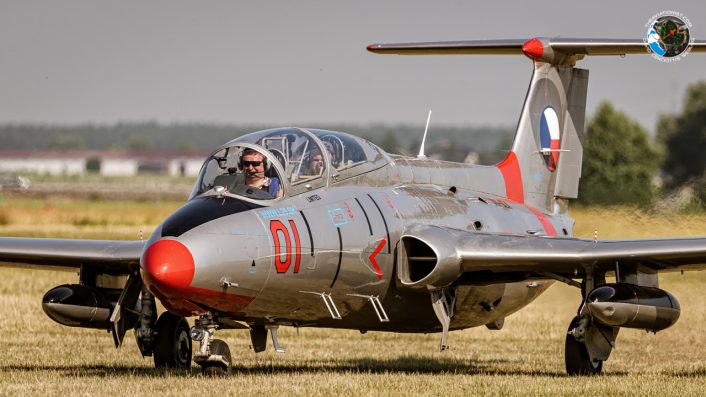
Nonetheless, Leszno this year was quadri-themed.
The first theme were the gliders, paramotors, and local GA. Here we could have witnessed some interesting highlights – in a form of displays performed by paramotors, paragliders, and ultralight trikes. The glider theme dates back to the years when the event was known primarily as the Glider Picnic. Thus, it may be said that it paid homage to its heritage. Shows by S-1 Swift glider (flown by Guy Westgate – at night and during the day), Red Bull Blanix (with spectacular pyro), or Aerosparx (Grob 109B motorgliders with pyro and LED elements during the night show and loads of smoke during the day) all made us look back to the days when Leszno was focusing on gliders mainly. The local element also involved the Alon A2s/Ercoupes, doing a ‘flying circus’ style show, with one of the aircraft based in Leszno.
The second theme came in the form of The Flying Bulls. Red Bull decided to support the show in Leszno, sending an impressive fleet of aircraft to this seemingly local show.
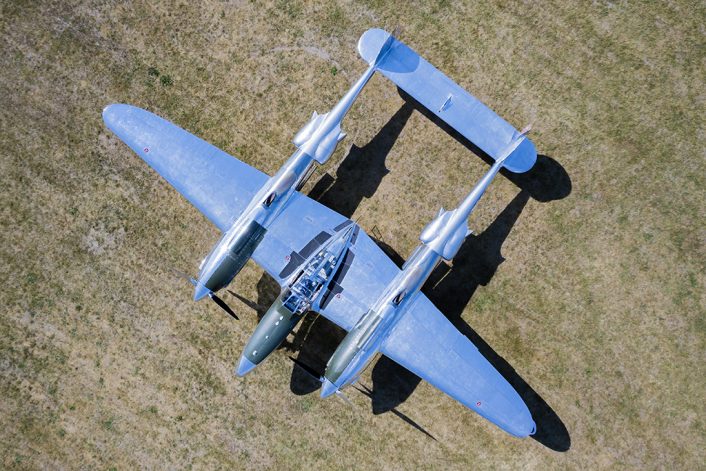
The teams that gathered under this sign came in a broad variety. First, we had the Red Bull Team Schaerer flying RC Glider models, in an impressive show. Then, we had the famous Bolkow 105, with its display routine that could have been viewed as a model for the helicopter displays, with multiple flips, rolls, and loops that are seemingly not really a part of the helicopter domain. The Bo-105’s engine, however, provides the aircraft with enough power to stage a spectacular show. Then, we had the Red Bull Blanix glider team that did a night show with pyro. Finally, the Flying Bulls came to Leszno with a large fleet, bringing their B-25, T-28 Trojan, P-38 Lightning, and the newly acquired P-51 Mustang. Luke Czepiela, Red Bull Air Race pilot from Poland, also performed several flypasts with the warbirds, as well as a solo show of his own, including a slalom between hot-air balloons, at a low level. The Flying Bulls performed their routines in different configurations – for instance, the P-38 flew a duo-display with the P-51, while the B-25 was paired with the Trojan. This contributed to the attention-catching nature of the program.
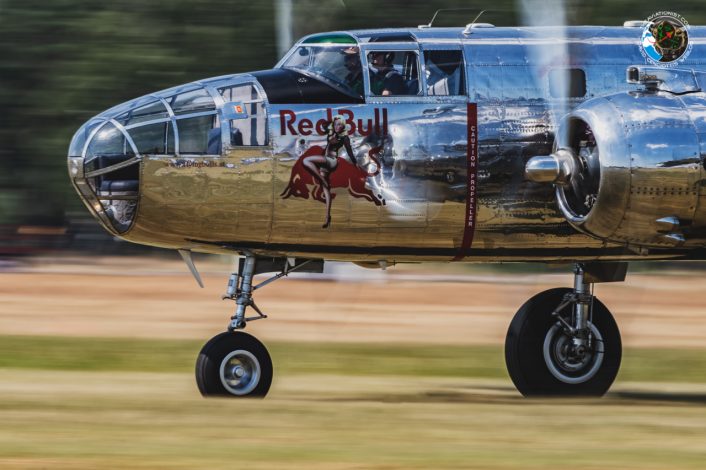
The jets can be viewed as the third theme of the Leszno show. The performances staged by the SBLim-2 (Polish license-built MiG-15), L-29 Delfin, and finally, the F-16 Tiger Demo Team are a novelty – even though the Leszno event had the Lim perform last year, having three jet-powered acts in the show schedule is a novelty. Well done, Leszno!
The fourth theme were the night/evening displays, so characteristic for the Leszno event. Noteworthy, the show organizers have made this portion of the program even more unique this year. Not only did it involve the usual acts, by Marek Choim, Aerosparx, or the Flying Dragons paramotor team, but the show in the evening also saw the participation of military aircraft, that not so often perform displays in the rapidly worsening visibility. Swiss Super-Puma Display Team, with a spectacular flare drop, was the first highlight of the evening show – the organizers in Leszno have been trying 5 years to make the Swiss team come over, and perform this act. Finally, they managed to accomplish this. The night program also involved unique highlights in the form of participation of the Polish Air Force. First, the Polish F-16 Tiger Demo Team performed its evening/sunset show program at 9.06 PM.
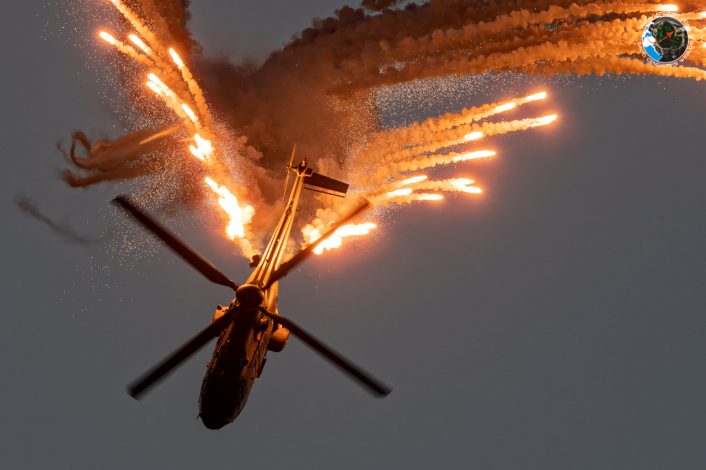
Nonetheless, the show was really stolen by the first-ever public demo of the Polish C-130 Hercules airlifter, flying out of Powidz, that overshadowed the seemingly more spectacular Viper demo. The display involved several tight turns, a simulation of a tactical landing at an austere field, and a simulation of a cargo drop. Then, the aircraft flew away, as if it was the end of its act. After a break, filled in by Marek Choim’s act in his Extra 330, the Hercules came back, dropping all of the flares that it could carry overhead, leaving the audience stunned in awe. The F-16 display, meanwhile, was flown too high, and it was probably not really designed for a small airfield like EPLS. Compared to the remaining acts, it was a minor disappointment. It also seems that it could have been flown around 10 minutes earlier so that enough light would be available to the photographers to properly capture the blue light of the afterburner.
The remainder of the night show involved the ‘old-but-new’ acts by Flying Dragons paramotor team, and by Aerosparx. The Flying Dragons performed their usual routine to the music by Queen, with loads of flares and light show synced with the audio, while the Aerosparx flew a new program, with a Leszno special: two Grob 109B motorgliders were circling a tower with fireworks installed on top, in sync to the Swan Lake by Tchaikovsky. A truly awesome way to conclude the already spectacular show.
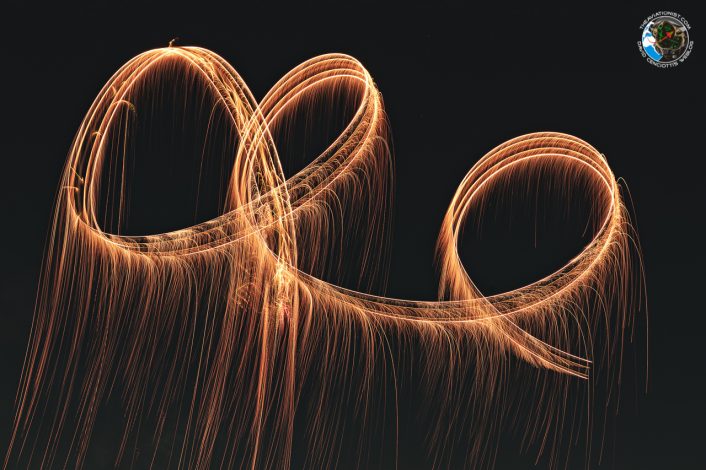
Overall, despite the limitations and circumstances imposed this year again by the COVID-19 pandemic, we may say that the air shows are about to return. The Leszno event has given us hope that we were longing for, for so long.
As it sadly turned out later, the Leszno event was the last one for the T-28 and its pilot, Rainer Steinberger (54 years old). He died in an air accident over the Czech Republic village of Zvíkovské Podhradí (on Sunday, Jun. 20). A passenger aboard the same aircraft [a photographer and friend of The Aviationist], was badly injured in the crash. It needs to be said, that the Trojan show – with its distinctive smoke trails, has been a major highlight of the Leszno event. The shock and sadness caused by what happened afterward are beyond imagination.
